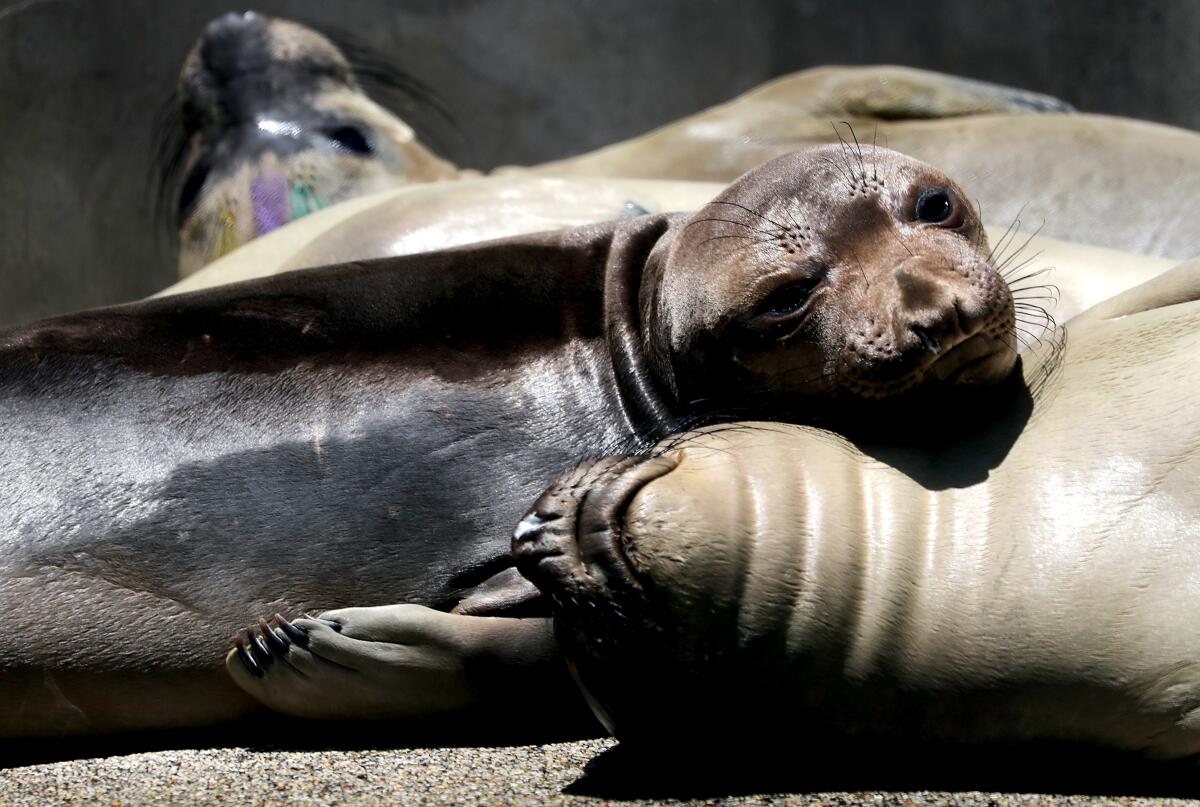What’s killing hundreds of sea lions and dozens of dolphins along the Southern California coast?

More than 1,000 marine mammals along the Southern California coast have gotten sick or died this month due to a bloom of toxic algae, according to the National Oceanic and Atmospheric Administration.
The Channel Islands Marine and Wildlife Institute, a local rescue organization, has logged hundreds of reports of dead sea lions and nearly 60 dolphins in the first few weeks of June, according to NOAA.
“We are managing more than 200 reports of marine mammals in distress each day,” Ruth Dover, co-founder and managing director of the organization, said in a news release. “We are doing the best we can to keep up with the intense pace. Please continue to report all sick and injured marine mammals as we are getting to as many animals as we can, as quickly as we can, each day.”
High concentrations of domoic acid — a neurotoxin produced by the marine algae Pseudo-nitzschia — have been found in waters from Orange County to San Luis Obispo County, according to forecasts by the NOAA and the Southern California Coastal Ocean Observing System. There are especially high concentrations around Ventura and Santa Barbara counties.
Ventura resident and photographer Kelly Nakamaru saw a dead dolphin last week at Ventura’s popular surfing spot known as California Street or “C Street.”
“My heart was so heavy,” she said.

On Sunday, Nakamaru called the Channel Islands institute when she saw that the dolphin was still on the beach but was told, “‘We have dead seals and dolphins all over the beaches right now.’”
In fact, when Nakamaru was walking Tuesday morning on Ventura’s Emma Wood State Beach she saw five more deceased dolphins washed ashore.
Sam Dover, executive director of the Channel Islands institute, said in an Instagram post that the institute was “currently inundated with domoic acid sea lions and dolphins.”
“We are receiving 30-60 calls per hour and responding to over 30 animals per day,” he said.
The algae tend to grow during spring and fall and under specific conditions, such as when an upwelling of water results in nutrients from deeper water rising to the surface where the sunlight is stronger, according to the Channel Islands institute. The toxin produced by the algae can cause brain damage, seizures and death in marine animals. The toxin doesn’t affect humans unless they eat it in contaminated food.
Experts recommend that if you see a marine mammal exhibiting odd behaviors, such as swaying their head back and forth, seizure activity or foaming at the mouth, to keep your distance and contact the Channel Islands institute at (805) 567-1505 or online.
Algal bloom events have happened in Southern California in 2002, 2006, 2007, 2017 and 2022.
California sea lions are the ocean mammals most frequently exposed to domoic acid because of the location of their foraging sites and habitats, according to the Channel Islands institute. Pregnant sea lions, in particular, are susceptible because they tend to eat more food. Domoic acid can cause prenatal mortality, including stillbirths and death, as well as premature births.
With treatment, symptoms usually subside within 72 hours, and in many cases sea lions can recover. The toxin can damage the hippocampus region in the brain, resulting in memory loss and an inability to learn or retain information. The damage depends on how much contaminated fish a sea lion has consumed.
More to Read
Sign up for Essential California
The most important California stories and recommendations in your inbox every morning.
You may occasionally receive promotional content from the Los Angeles Times.











